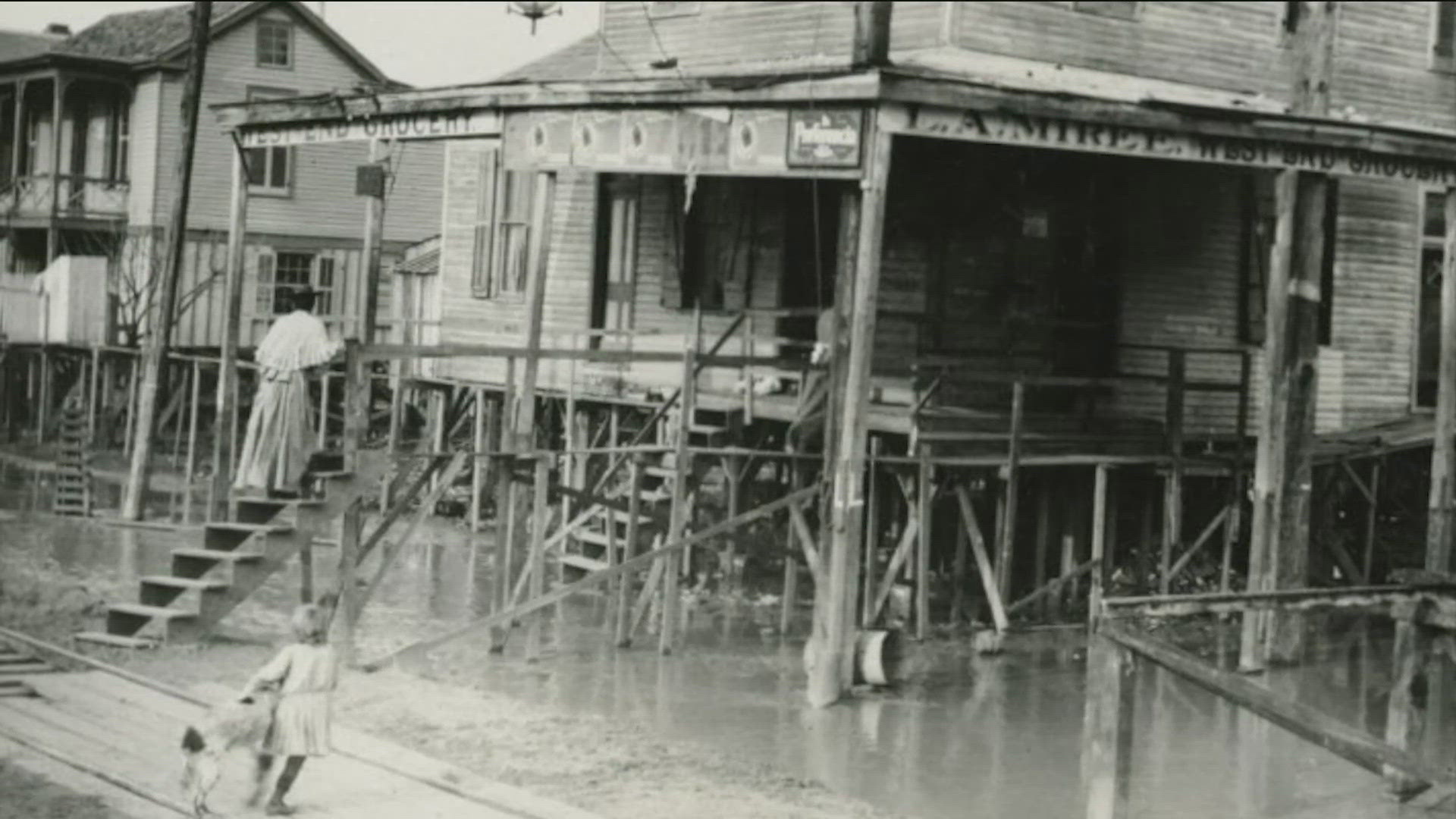AUSTIN, Texas — The Hurricane of 1900 that struck Galveston was an unspeakable tragedy that may have killed as many as 8,000 people, although the exact toll will never be known.
However, there’s another story about the hurricane that may not be as familiar.
It’s the story of how an entire city was raised as much as 17 feet above sea level and that required the lifting of 500 city blocks and 2,000 buildings.
Within a year after the mighty storm, it was clear that Galveston, which was sitting virtually at ground level to the ocean, could not remain at the mercy of the Gulf of Mexico.
First, engineers devised a plan to build a massive seawall to protect the city from the high tides of hurricanes, while at the same time accomplishing what many thought to be impossible: Delivering sand by barges from Galveston Bay into the heart of the city via manmade canals to raise the ground level.
Homes were lifted on wooden stilts awaiting the next pouring of sand. For people who couldn’t afford to have their homes raised, families moved to the second floor and let the sand bury their first floor.
Perhaps most amazingly, even large buildings like St. Patrick’s Church were lifted with hundreds of hand-turned jack screws before the new ground was added below.
To this day, the raising of Galveston between 1902 and 1911 is recognized as an engineering marvel.
Today, along the beach, two monuments pay tribute to the 1900 storm: One acknowledges the tragedy of all those lives that were lost to the hurricane. The other is a modest monument with a small piece of the seawall, which serves as a tribute to the countless lives that have been saved through brilliant engineering and the ingenuity and hard work of the people of Galveston.

